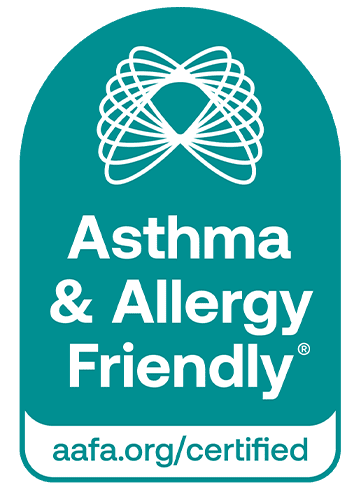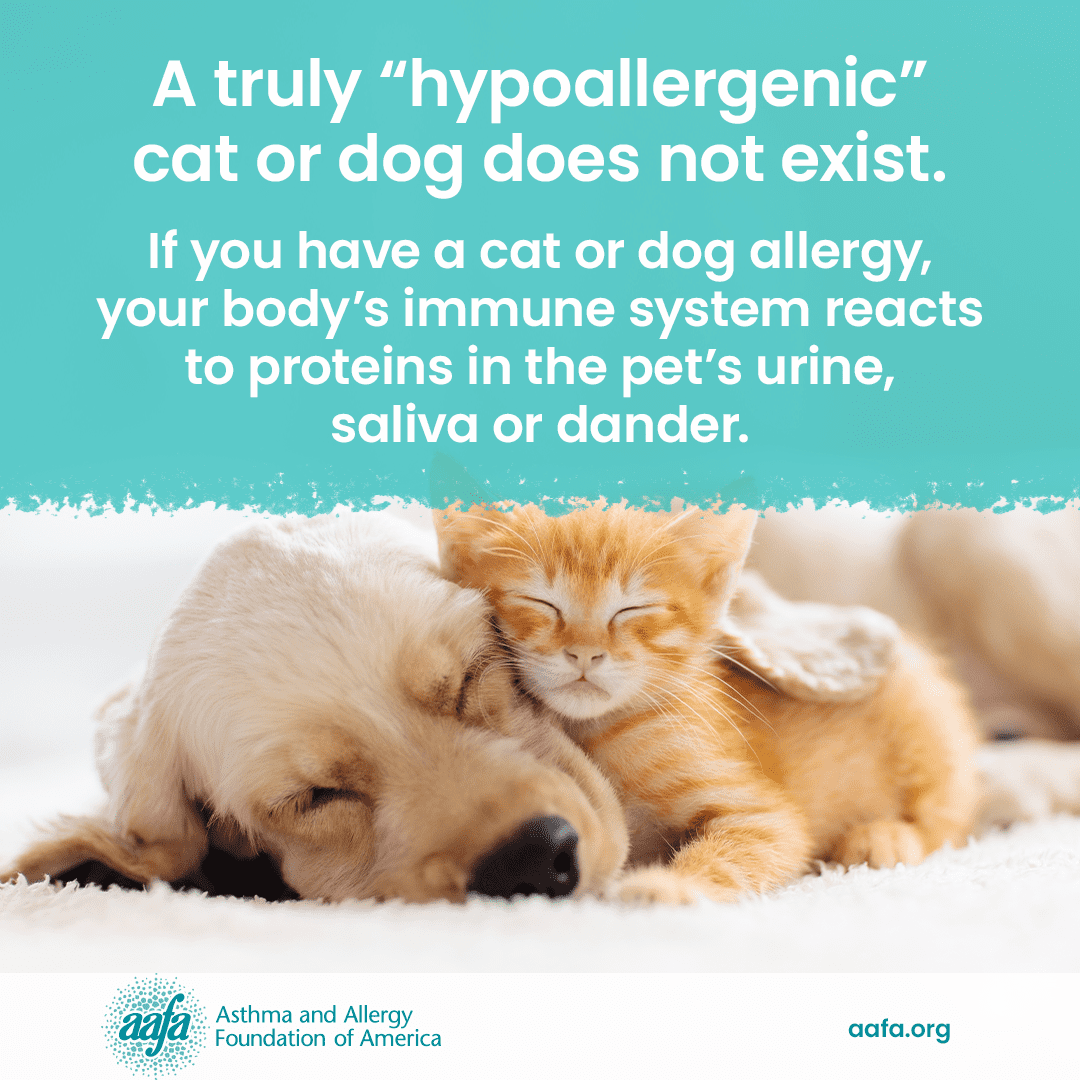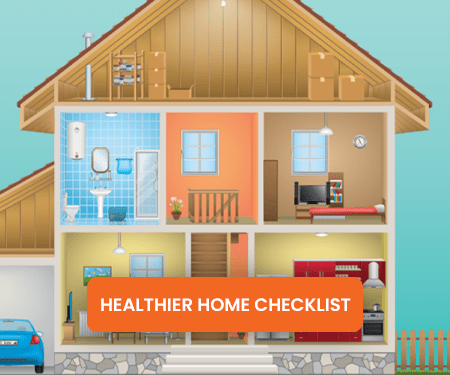Allergies
Pet Allergy
Allergies to pets with fur, such as cats and dogs, are common. Even rabbits, guinea pigs, hamsters, ferrets, and horses can cause allergy symptoms. People can also be allergic to animals with feathers (birds like parrots or parakeets).
When you have a pet allergy, you are not allergic to the pet’s hair, fur, or feathers. You are allergic to the protein that is found in the pet’s dander (dead skin cells) saliva, and urine. The hair, fur, or feathers collect the dander. It can also carry other allergens like dust mites, mold, and pollen. When those proteins get into your airways, eyes, nose, mouth, or on your skin, it triggers allergy symptoms.
Animal dander contains skin flakes, urine, saliva.
These are all allergens that can trigger allergic reactions.
What Are Common Animal or Pet Allergy Symptoms?
Cat, dog, and other animal allergens can land on the membranes (soft tissue) that line your eyes and nose. You can also breathe in pet allergens into your airways. Animal allergy symptoms can include:
- Runny nose (also known as rhinorrhea – usually a clear, thin nasal discharge)
- Stuffy nose (due to blockage or nasal congestion)
- Postnasal drip (mucus runs from the back of your nose down your throat)
- Sneezing
- Itchy nose, eyes, ears, and mouth
- Red and watery eyes
- Swelling around the eyes
- Coughing
- Hives
- Shortness of breath, coughing, and/or wheezing
It is common to get itchy eyes after petting an animal and then touching your eyes. A pet scratch or lick on your skin can cause the area to become red and itchy. You may get hives. A pet allergy can trigger an asthma attack if you also have asthma. This is called allergic asthma.
People with pet allergies have different levels of sensitivity to pet allergens. Some people have very minor symptoms, while other people have severe symptoms. If allergen levels are low, symptoms may not appear until after several days of contact with the pet.
Animal allergens can get into the air. Many airborne allergens are small enough to get into your lungs. For some people, this exposure can make it very hard to breathe. An asthma episode can begin within 15 to 30 minutes of inhaling allergens. Learn more about allergic asthma.
Are There Hypoallergenic Pets?
All dogs and cats can cause allergy symptoms. People with dog or cat allergies may tolerate some breeds more than others. People may think those breeds are “hypoallergenic,” but a truly non-allergic dog or cat does not exist.
You can be allergic to the animal’s skin cells, urine, and/or saliva. These have different proteins your immune system may react to. Research is looking into if there is a way to change the proteins so that they don’t trigger symptoms.
When choosing a pet, consider fostering one first to see if you have an allergic reaction. Another option is to choose pets that do not have fur or feathers. Fish, snakes, or turtles are some good choices.
Where Are Pet Allergens Found?
Cat and dog allergens are everywhere. Cat allergens are especially sticky. Pet allergens can be found in homes, classrooms, workplaces, and other places where pets have never been. This is because people can carry pet allergens on their clothing.
Pet allergens can collect on furniture and other surfaces. The allergens may cling to walls, fabric furniture, and clothing. They can stick to carpets, pillows, and other surfaces. They may remain at high levels for several months. Pet allergens can cause symptoms up to 6 months after the animal is gone, especially cat allergens.
Allergens can get into the air when you pet or groom an animal. Once allergens have settled, they can be stirred into the air again. This can happen during dusting, vacuuming, or other household activities. Once airborne, the particles can stay in the air for long periods.
Because animal allergens are everywhere, it can be challenging to manage your symptoms if you have a severe allergy.
How Does a Doctor Diagnose an Animal/Pet Allergy?
When you have moderate to severe allergies, it is best to see a board-certified allergist.
Your doctor will diagnose a pet or animal allergy based on your medical history, symptoms, a physical exam, and allergy test results. Allergy testing is the best way find out if you allergic to a specific animal type. Your doctor can use either a blood test or skin test to help get a diagnosis.
You can develop allergies at any time. And allergies can change over time. It is possible you were not allergic to your dog in the past, but you are now.
A pet allergy can be challenging to manage. It can be difficult to visit friends and relatives who have pets or farm animals. It may be especially hard for children who cannot visit the homes of friends. Pets in classrooms can also be challenging for kids. Talk with your doctor about how to best manage your animal allergy. They may recommend taking medicine before contact with animals. They will also help you with what steps you should take after being around animals.
What Treatments Are Available for a Pet Allergy?
Avoiding animals is not always possible nor the choice you want to make. When you can’t completely avoid pets or animals, there are over-the-counter and prescription medicines and steps you can take to help control your symptoms.
Allergy Medicine Guide
Nasal rinse: Using a saline (saltwater) nose rinse can help cut down mucus and rinse allergens out of your nose. Remember to use these as directed.
Corticosteroid nasal sprays reduce inflammation (swelling) in the nose and block allergic reactions. They are the most effective medicine type for allergic rhinitis because they can reduce all symptoms, including nasal congestion. They can also provide some relief for eye allergy symptoms. Nasal corticosteroids have few side effects (e.g., headache, nose bleeds or irritation).
Corticosteroid nasal sprays: FLONASE®, Nasacort®, Nasonex™, Nasalide/Flunisolide, Omnaris™, QNASL®, RHINOCORT®
Antihistamines relieve sneezing and itching in the nose and eyes. They also reduce a runny nose and, to a lesser extent, nasal stuffiness. Look for a long-acting, non-drowsy antihistamine. The newer medicines do not carry the risk of toxicity and death that has been associated with older antihistamines like diphenhydramine.
Non-steroidal antihistamine nasal sprays (may cause drowsiness): Astelin®, Astepro®, Patanase®
Non-drowsy oral antihistamines: Allegra®, CLARINEX®, Claritin®
Oral antihistamines that may cause drowsiness in some individuals: Xyzal®, ZYRTEC®
Cetirizine (ZYRTEC®) and loratadine (Claritin®) are the antihistamines of choice for use during pregnancy. They have established safety profiles and are effective in treating allergy symptoms during pregnancy.
Diphenhydramine and related short-acting antihistamines (like promethazine) should be avoided. Diphenhydramine (known under the brand name BENADRYL®) is not a good choice to take for allergy symptoms because of its short-term action to manage symptoms and several known negative side effects. The major side effects of diphenhydramine and older generation antihistamines include drowsiness, sedation, dry mouth/eyes, and fatigue. This can also impair alertness, concentration, multitasking, and memory. In turn, this antihistamine can affect important functions, such as learning and test performance in children, as well as operation of machinery and cars in adults. As these medicines can impair you, they can affect work performance and safety.
Eye drops: Allergy eye drops can relieve eye burning, itchiness, redness, increased tearing, and swelling.
Antihistamine eye drops: Azelastine/Optivar, Bepreve®, Elestat®, LASTACAFT®, Opcon-A®, Systane® ZADITOR®, Patanol™, and Pataday®
Decongestants help shrink the lining of the nasal passages and relieve nasal stuffiness. They generally are only used for a short time (3 days). Read the instructions carefully and do not use them for extended amounts of time. Extended use of decongestant nasal sprays can cause a rebound effect that worsens your congestion. Make sure you talk with your doctor about the appropriate use of decongestants, limitations, and potential side effects.
Nasal spray decongestants: Afrin®, Vicks Sinex™
Oral decongestants: SUDAFED®
Some allergy medicines combine an antihistamine with a decongestant. Certain types of combo medicines (such as the ones that contain pseudoephedrine as the decongestant) are available “behind the counter”. Behind-the-counter products are available without a prescription but have limitations on purchases due to state and federal laws. Talking with pharmacy staff is generally necessary to obtain these types of allergy medications.
Decongestant + antihistamine combos: Allegra-D®, Claritin-D®, Clarinex-D, ZYRTEC-D®
Check with your doctor before using decongestants if you have high blood pressure, heart disease, glaucoma, thyroid disease, or trouble urinating. They may cause issues if you have any of these conditions and they may interact with other prescription medicines.
Federal Regulations on Decongestants
The oral form of phenylephrine (PE) is a common active ingredient in many OTC decongestants. An expert panel of the FDA reviewed studies which showed oral PE is not effective at relieving nasal congestion in commonly used doses. The FDA is proposing to end use of oral PE. This would remove these products from the U.S. market. The change would not affect the nasal spray forms of PE.
Decongestants that contain pseudoephedrine (PSE) require photo identification and are only available to purchase behind the pharmacy counter.
Cromolyn sodium is a nasal spray that blocks your body from releasing chemicals (such as histamine and leukotrienes) that cause allergy symptomsincluding histamine and leukotrienes. This medicine has few side effects, but you must take it three to six times a day. For optimal results, this medication should be used daily during your allergy season. It can be started up to one week before your allergy season begins.
Cromolyn sodium nasal spray: NasalCrom®
Leukotriene receptor antagonists (or modifiers) block the action of important chemical messengers (other than histamine) that are involved in allergic reactions. These medicines help manage asthma and allergic rhinitis symptoms. These medications are taken orally. How often you take them depends on the specific drug. Discuss the appropriate use of these medications with your doctor, including the risks and benefits of therapy.
Options include: ACCOLATE®, SINGULAIR®*, Zyflo CR®
*Note: Montelukast (brand name SINGULAIR®) has a black box warning because it can cause serious mental health side effects. This is a safety warning from the Food and Drug Administration (FDA). This means you need to be aware of a drug’s side effects or important instructions for safe use of the drug. We encourage you to speak with your health care provider before, during, and after the start of any new medicine. If your doctor recommends montelukast, talk with them about possible risks and concerns.
Medical Review: March 2025 by John James, MD
If the medicine options above don’t help control your symptoms, consider the following options as well:
Allergy shots: If other treatments and steps are not working, allergy shots (immunotherapy) can be very effective. They require a time commitment and multiple appointments. Your allergist injects a small amount of allergen into your skin. They watch you for symptoms. Over time, the amount of allergen they inject is increased. This treatment trains your immune system to tolerate the allergen better. Talk with your allergist to see if this option is right for you.
Allergen-reducing cat food: If you have a cat, you can now buy cat food that can reduce cat allergens. One product available is Purina Pro Plan LiveClear. The food neutralizes a common allergen, Fel d1, found in cat saliva. It may reduce your reactions to cats that have that allergen. But you may still be allergic to other cat allergens.
If I Want to Keep My Pet, Can I Take Steps to Reduce My Pet Allergy?
Animals become a part of your family. If your allergy is manageable, you may want to keep your pet. Here are some ways to manage pet allergens in your home:
Reduce your exposure to pet allergens.
- Keep your pet and cages, bedding, etc. out of bedrooms or places people sleep. You spend about 1/3 to 1/2 of your time there. If you have a bedroom door, keep it closed.
- Keep pets off fabric furniture.
- Have someone without a pet allergy brush the pet outside to remove fur. Ask them to clean the litter box, bedding, or cage regularly. If you do the grooming and cleaning, wear a face mask and gloves.
- Wipe your pet down with pet-friendly wipes or towels after it has been outside to remove pollen and urine.
- Change your clothes and shower after you spend time with an animal. (This can depend on how sensitive you are and the level of allergens you are exposed to.)
- Wash your hands, face, and clothes after petting or touching the pet, its cage, or bedding.
Clean and reduce allergens in your home.
- Wear a mask and gloves when cleaning.
- Remove dust on hard surfaces often with a damp cloth. A damp or microfiber cloth will help keep the pet dander and fur from going back into the air.
- Wipe down walls, cabinets, and floorboards with a damp cloth.
- When possible, choose furniture and window coverings that are not made of fabric.
- Use slipcovers on fabric furniture or cover with blankets that can be washed weekly in hot water.
- Vacuum fabric furniture and carpets weekly. Use a vacuum with a HEPA filter. Certified Asthma & Allergy Friendly® vacuums meet AAFA’s standards for vacuums.
- Remove carpet, if possible, and install hard surface flooring.
- If you are going to use carpet, select one with a low pile and steam clean it often. Better yet, use throw rugs and wash them weekly in hot water. When kids play on the floor, cover the carpet with a yoga or play mat.
- Wash or vacuum fabric curtains or use blinds you can dust with a damp cloth.
- Forced-air heating and air conditioning can spread allergens through your house. Cover bedroom vents with a dense filtering material like cheese cloth.
- Use an air cleaner with HEPA filter at least four hours per day. Consider using a Certified Asthma & Allergy Friendly® air cleaner in your home, especially where people sleep.
- Use a Certified Asthma & Allergy Friendly® filter and/or HEPA filtration with your central heating and air conditioning to help remove pet allergens from the air.
- Wash your pet every week. It may reduce airborne allergens.
If your symptoms continue and you decide to rehome your pet:
- Remove all pet bedding and furniture.
- Wipe down hard surfaces including walls, cabinets, and floorboards with a damp microfiber cloth.
- If possible, remove wall-to-wall carpeting or have it steam cleaned.
- Steam clean any fabric furniture or curtains you can’t wash.
- Change air filters and consider cleaning air ducts.
Note: Pet dander can remain in a home for up to 6 months after the pet has been removed.
The Asthma and Allergy Foundation of America (AAFA) advocates for equal rights for people with asthma and allergies on planes. Our advocacy helped put new rules into place on U.S. airlines that limit emotional support animals on planes. But there is still more work to do to make flying a safer environment for people with pet allergies. Join our community to receive AAFA Advocacy Action Alerts. You will receive updates on this issue, as well as other legislation that affects people with asthma and allergies!
Medical Review: September 2024 by Mitchell Grayson, MD
References
1. Brown, A. (2023, July 7). About half of U.S. pet owners say their pets are as much a part of their family as a human member. Pew Research Center. https://www.pewresearch.org/short-reads/2023/07/07/about-half-us-of-pet-owners-say-their-pets-are-as-much-a-part-of-their-family-as-a-human-member/
2. Chan SK and Leung DYM. Dog and Cat Allergies: Current State of Diagnostic Approaches and Challenges. Allergy Asthma Immunol Res 2018 March;10 (2) 97-105. https://doi.org/10.4168/aair.2018.10.2.97
Using CERTIFIED asthma & allergy friendly® products in your home can help you have a healthier indoor environment, as well as reduce allergens.
Learn more about the asthma & allergy friendly® Certification Program by visiting aafa.org/certified.
Allergy Capitals
Your location can have an impact on your seasonal allergies. AAFA’s Allergy Capitals™ report looks at the top 100 most challenging cities in the continental United States to live with seasonal pollen allergies.















